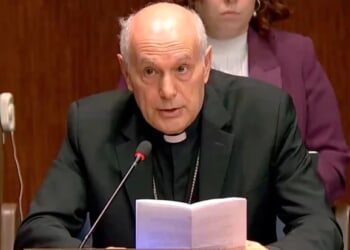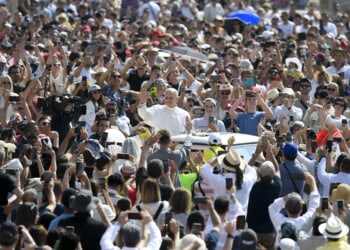David Willetts is a member of the House of Lords and President of the Resolution Foundation.
Why does the state keep growing?
The Chancellor’s spending plans continue the re-shaping of the British state.
Some critics complain that there is not enough for key public services. Other critics complain that total public spending is growing with little to show for it. What is going on?
Reconciling these two contrasting questions is possible. The increase in public spending Rachel Reeves announced last week was above all to spend more on the NHS.
Our estimate at Resolution Foundation is that health and care is taking 90 per cent of the planned increases in day-to-day departmental budgets through the three years of the Spending Review. Back in 2010 health and care spending stood at 34 per cent of day-to-day departmental spending directly controlled by Westminster. By 2028 it will have increased to 49 per cent of departmental spending. It is going through £200bn.
This priority for the NHS explains the paradox that there is both an increase in public spending but at the same time there are still real pressures on departmental budgets. The British public sector is becoming a large NHS with a smaller state attached to it.
There is one other feature of this NHS spending – it is predominantly for old people.
43 per cent of NHS spending is on those aged 65 and older.
By the time we are in our eighties the NHS is on average spending over £3,000 a year on us. For young and middled aged men it is down to almost a tenth of that – though pregnancy and associated care pushes it up closer to £1,000 for women in their thirties. Then it goes through the £1,000 a year barrier when you are a pensioner and keeps on growing after that. The NHS is above all a service for older people.
The other big budget is benefits which come in at over £300b. As I have shown in a previous column benefit spending is also increasingly going to older people. Benefits for pensioners are put up by successive Governments by more than inflation whereas they are being cut for working age families.
There is not much left to cut in spending for younger people. Education spending is still below its 2010 level in real terms per pupil. Universities are funded more by graduates and less by taxpayers than in any other Western country apart from the US.
Spending on unemployment benefits for young people is negligible – there is growth in disability spending on young people with mental health problems but that is not big enough to offset the overall trend.
All this means that we are creating not so much a nanny state as a granny state.
Conservatives talk about getting a grip on public spending: that means tackling this trend of increased spending for older people. But they just happen to be Tory voters so nothing is done. It looks like big Government for Tory voters and limited Government for everyone else. This is a peculiar and unstable basis for today’s party politics.
There is however one exception to all this. Instead of looking at current spending look at what is happening to capital spending. There the big gainer is Defence. We estimate at Resolution Foundation that once increases in financial transactions are stripped out, last week’s CSR delivers a £7.3 billion a year real-terms increase in defence. That contrasts sharply with the £3.6 billion cut to real investment across all other departments.
The deterioration in international security is understandably driving an increase in defence spending. David Edgerton has neatly characterised post War Britain as actually a warfare state – welfare spending lagged behind until the early 1970s.
But now we are trying to combine increased defence spending and increased spending on old people as well. That is why taxes are going to carry on going up.
Conservatives who wish to reverse the trend need to show what they would do about these deep-seated pressures.


![Former Bravo Star Charged After Violent Assault Using a Rock-Filled Sock in Tennessee Walmart [WATCH]](https://www.right2024.com/wp-content/uploads/2025/07/Former-Bravo-Star-Charged-After-Violent-Assault-Using-a-Rock-Filled-350x250.jpg)




![Karoline Leavitt Levels CNN's Kaitlan Collins and Other Legacy Media Reporters [WATCH]](https://www.right2024.com/wp-content/uploads/2025/07/Karoline-Leavitt-Levels-CNNs-Kaitlan-Collins-and-Other-Legacy-Media-350x250.jpg)
![Man Arrested After Screaming at Senators During Big Beautiful Bill Debate [WATCH]](https://www.right2024.com/wp-content/uploads/2025/06/Man-Arrested-After-Screaming-at-Senators-During-Big-Beautiful-Bill-350x250.jpg)

![Illegal Alien Walked Free After Decapitating Woman, Abusing Corpse for Weeks [WATCH]](https://www.right2024.com/wp-content/uploads/2025/07/1753013138_Illegal-Alien-Walked-Free-After-Decapitating-Woman-Abusing-Corpse-for-350x250.jpg)






